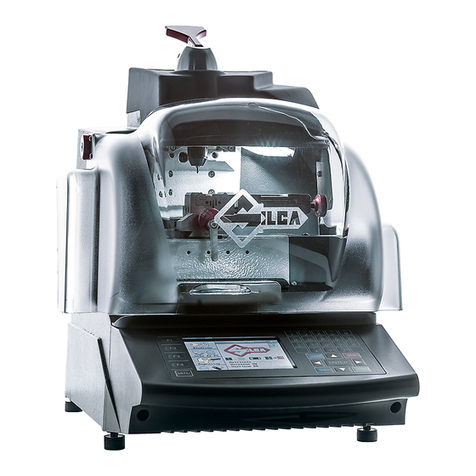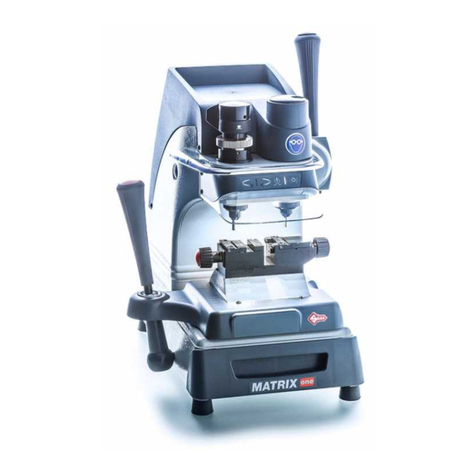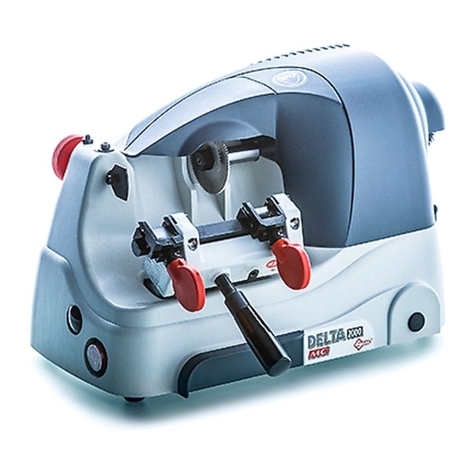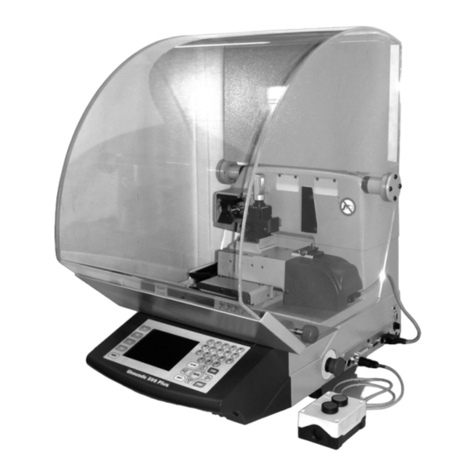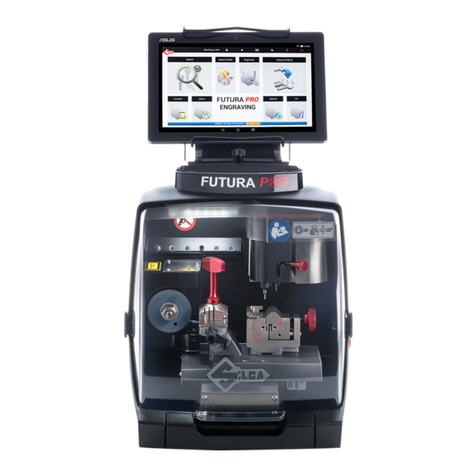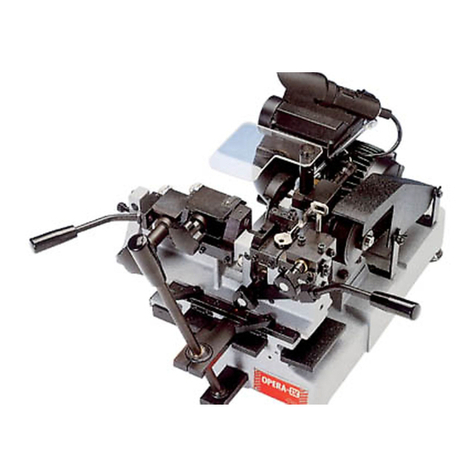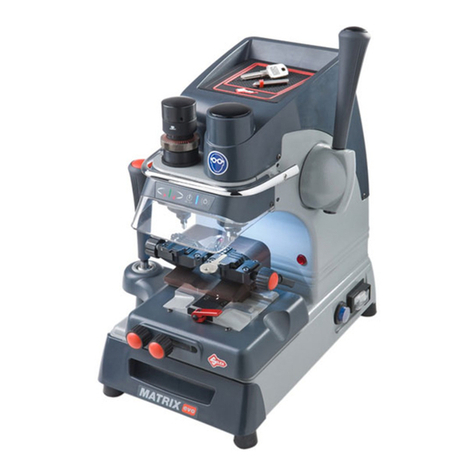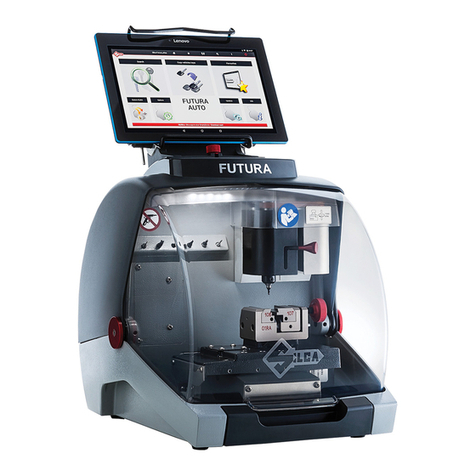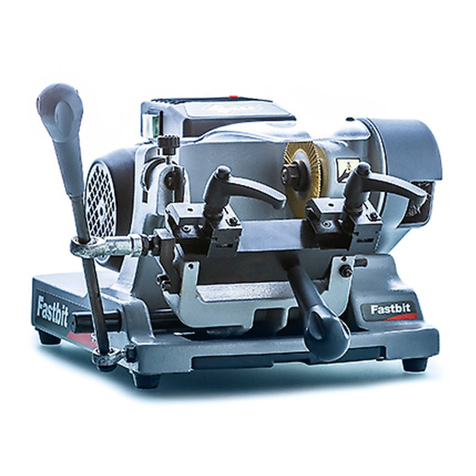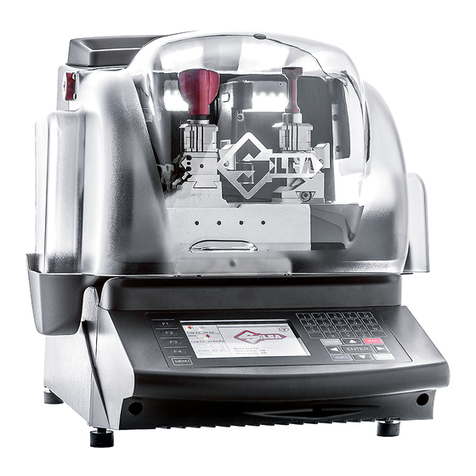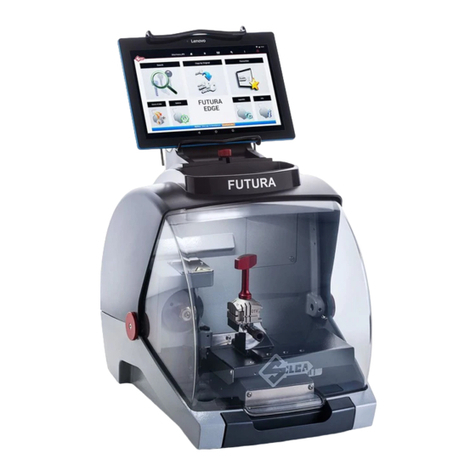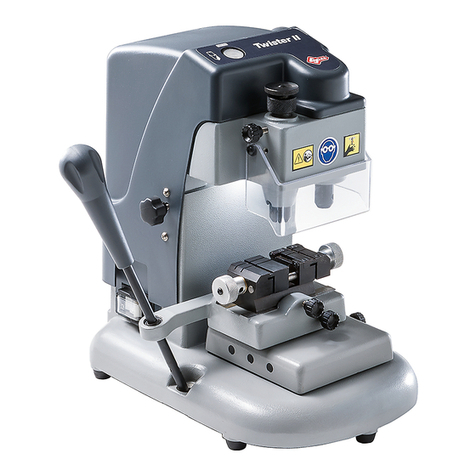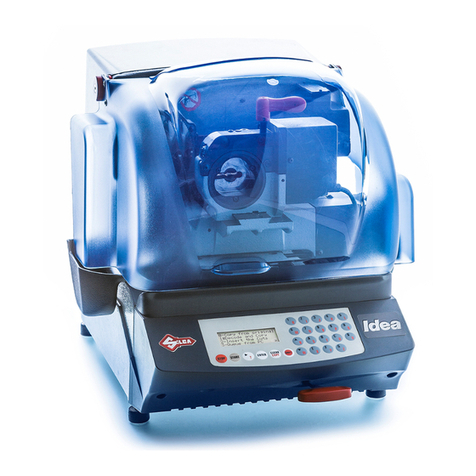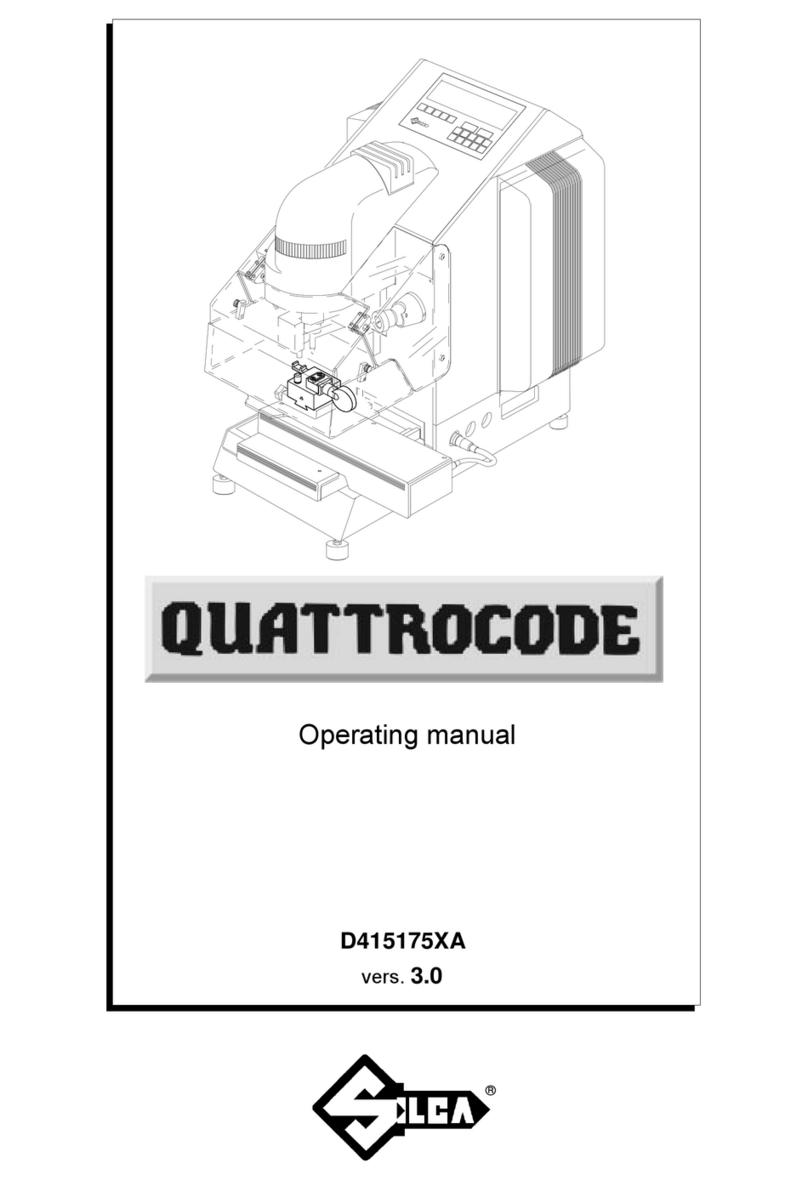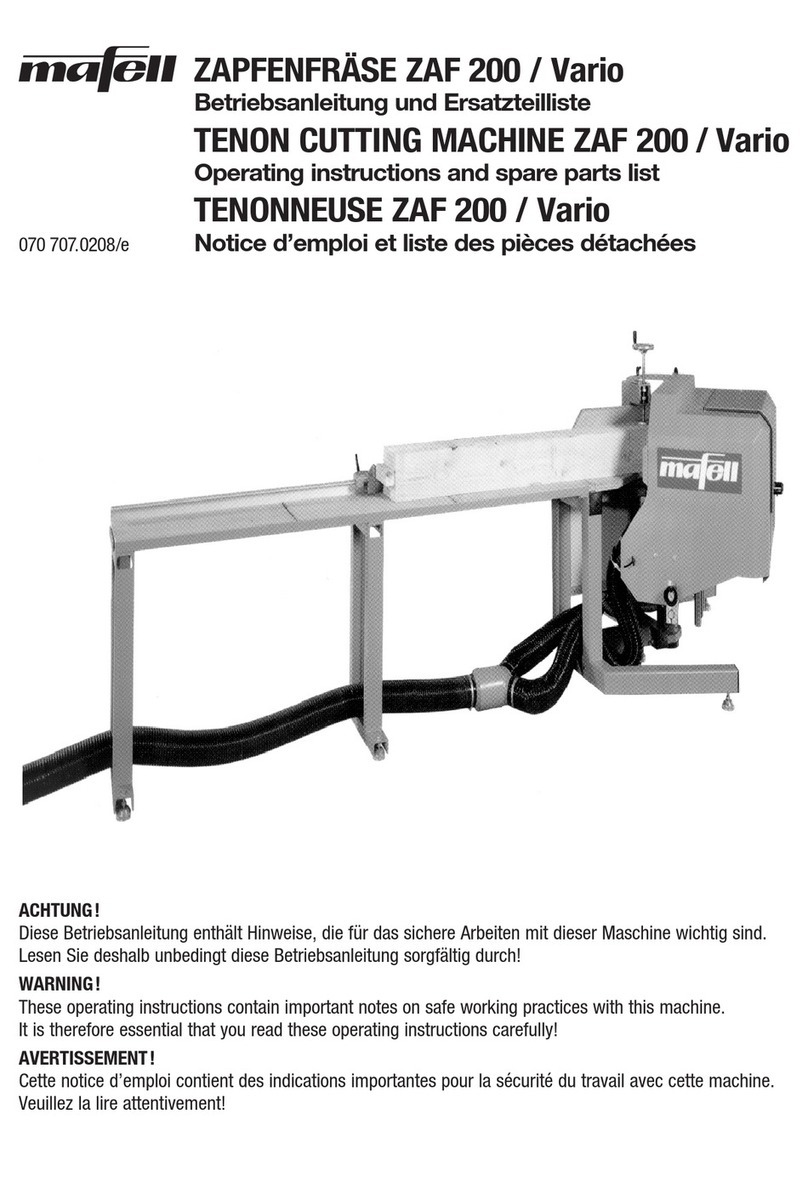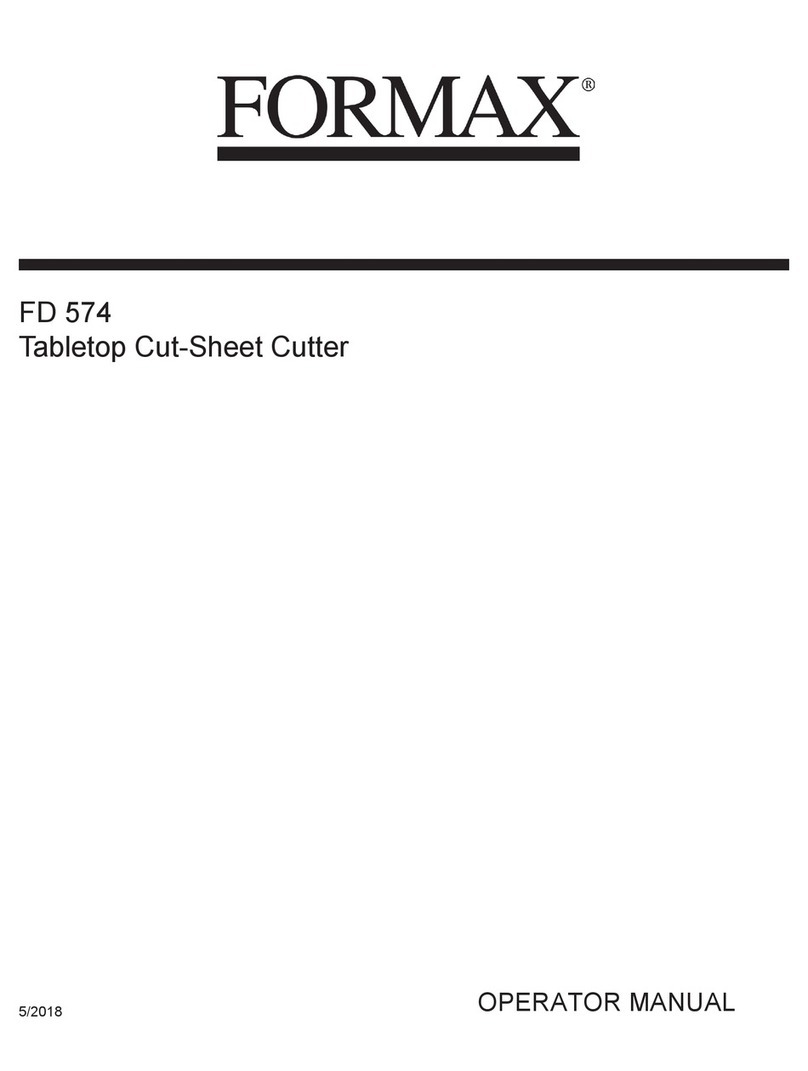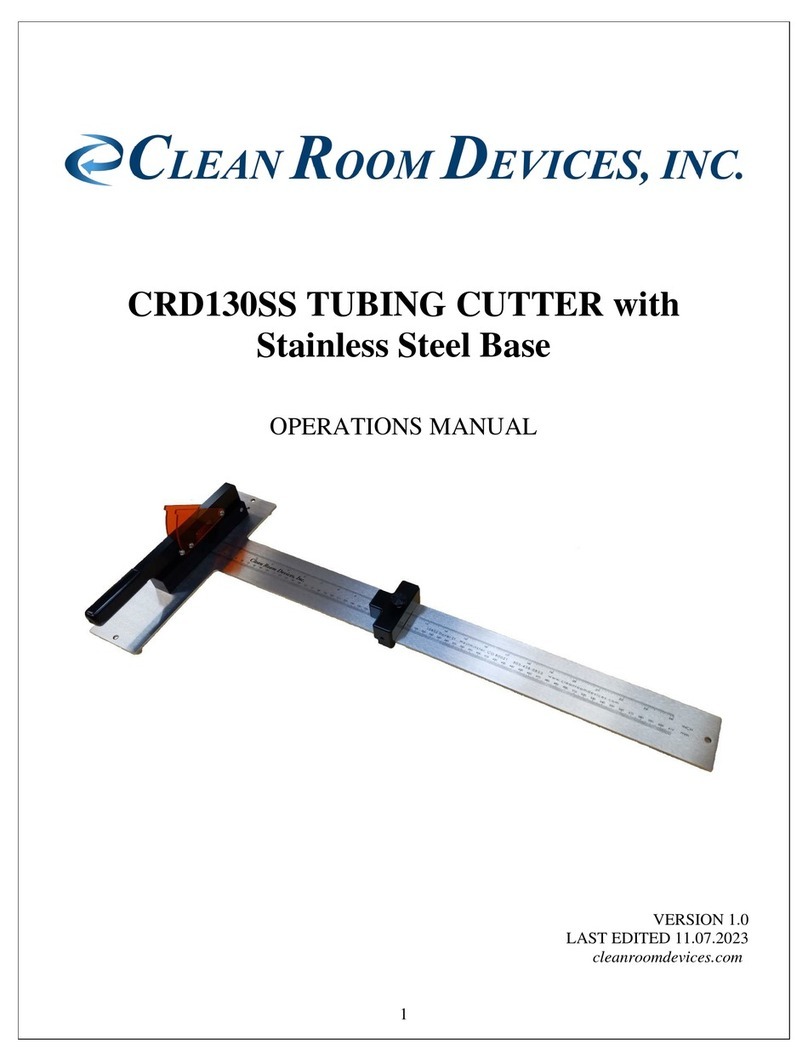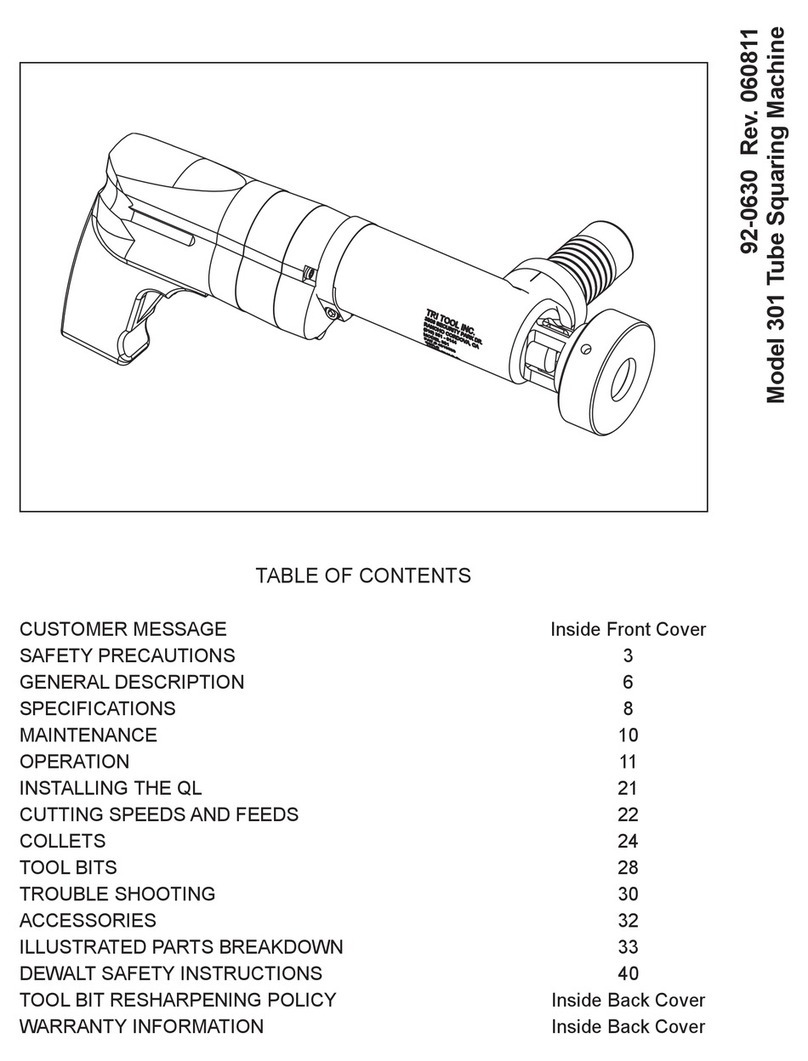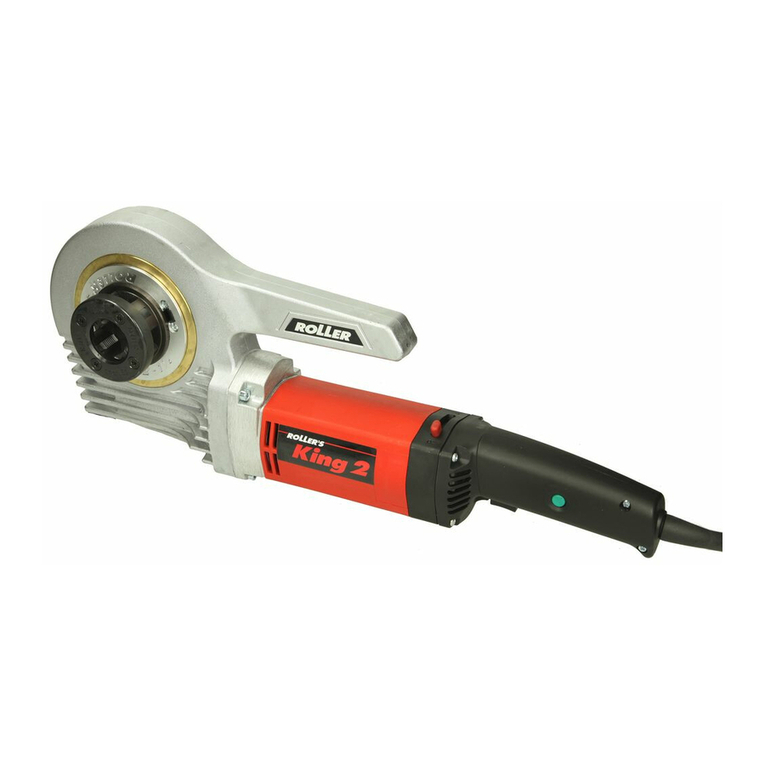
INDEX
REFERENCE GUIDE ............................................................................................ 1
GENERAL .............................................................................................................. 2
1 MACHINE DESCRIPTION ..................................................................................... 3
1.1 MAIN CHARACTERISTICS ................................................................................ 3
1.2 SAFETY ........................................................................................................ 4
1.3 MAIN WORKING PARTS .................................................................................. 5
1.4 TECHNICAL DATA .......................................................................................... 6
1.5 ACCESSORIES PROVIDED .............................................................................. 7
2 TRANSPORT ......................................................................................................... 8
2.1 PACKING ...................................................................................................... 8
2.2 UNPACKING .................................................................................................. 9
2.3 MACHINE HANDLING ...................................................................................... 9
3 MACHINE INSTALLATION AND PREPARATION ............................................. 10
3.1 CHECKING FOR DAMAGE ............................................................................. 10
3.2 ENVIRONMENTAL CONDITIONS ..................................................................... 10
3.3 POSITIONING AND INSTALLATION .................................................................. 10
3.4 DESCRIPTION OF WORK STATION ................................................................. 11
3.5 GRAPHICS .................................................................................................. 11
4 “SET UP” AND USE OF THE MACHINE ............................................................ 12
4.1 KEYBOARD AND FUNCTIONS ........................................................................ 12
4.2 USE OF THE CLAMP .................................................................................... 13
4.3 CUTTING BY ELECTRIC CONTACT ................................................................. 15
4.4 FITTING THE CLAMP TO THE MACHINE .......................................................... 16
4.5 CUTTER ..................................................................................................... 16
4.6 CHANGING THE CUTTER .............................................................................. 16
4.7 INVERTING THE PULLEYS ............................................................................. 17
5 OPERATING GUIDE ............................................................................................ 18
5.1 INITIAL OPERATIONS .................................................................................... 18
5.2 [1] COPY BY CODE .................................................................................... 19
5.2.1 SPECIAL CASES ......................................................................................20
5.2.2 LIMITED ACCESS TO DATA (PROTECTED SYSTEMS) ...................................24
5.3 [2] LIST OF CODES ..................................................................................... 24
5.4 USE OF THE MACHINE WITH A PERSONAL COMPUTER ................................... 25
5.4.1 [3] QUEUE FROM PC .............................................................................25
5.5 [4] CALIBRATIONS ...................................................................................... 26
5.5.1 CALIBRATING THE V100 CLAMP ..............................................................26
5.5.2 CALIBRATING CUTTERS ...........................................................................29
5.5.3 MANUAL ADJUSTMENTS ..........................................................................30
5.6 [5] MAINTENANCE ..................................................................................... 31
5.6.1 TESTS ...................................................................................................31
5.6.2 MACHINE ZERO POINTS ..........................................................................33
5.7 OPTIONS [6] ............................................................................................... 36
5.8 ERROR MESSAGES ...................................................................................... 40
6 CLEANING ........................................................................................................... 42
7 MAINTENANCE ................................................................................................... 43
7.1 TROUBLE SHOOTING ................................................................................... 43
7.2 MAINTENANCE OPERATIONS ........................................................................ 45
7.3 CUTTER REPLACEMENT ............................................................................... 45
7.4 BELT REPLACEMENT AND TENSION ADJUSTMENT .......................................... 46
7.5 CHECKING AND/OR REPLACING FUSES ......................................................... 47
7.6 ELECTRONIC CIRCUIT BOARD REPLACEMENT ................................................ 48
7.7 KEYBOARD/DISPLAY REPLACEMENT ............................................................. 49
7.8 ACCESS TO BACK COMPARTMENT ................................................................ 50
